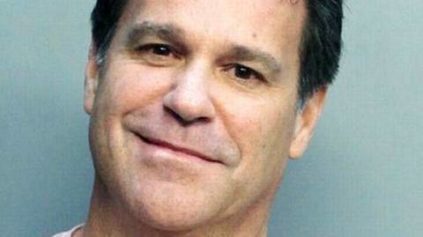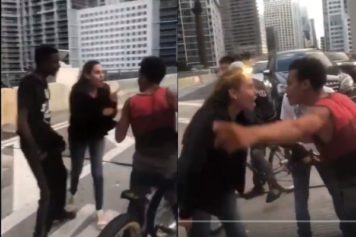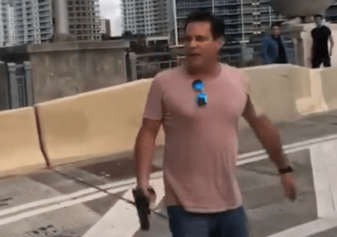No one was surprised when riots and protests broke out in response to the grand jury decisions not to indict Michael Brown and Eric Garner’s killers. What was surprising was the way people protested.
The protesters of today are taking notes from the past and revamping civil rights tactics in ways history books have yet to document.
“One of the things that is occurring is that you have younger activists who are protesting with the older more established activists,” Clarence Lang, Associate Editor of The Journal of African-American History and author of the upcoming book “Black America in the Shadow of the 60s,” told Atlanta Blackstar. “So I think in that sense there is both continuity with previous periods, but there is also this discontinuity, but it’s in positive ways. For example, the idea that you can’t have legitimate Black protests unless Black clergy are involved is an idea that is now being challenged and that’s a good thing.”
Just a glance at any news station reveals that the average protester isn’t the 40- to 50-year-old schoolteacher or bank clerk. No, it’s the 20-year-old student tired of having to bend over backwards to keep women from clutching their purses when he walks by. It’s the 25 year old grad student who is scared for her brother. It’s the 18-year-old college freshman publicly expressing her rage for the first time. It’s all of these people mixed together, fighting for one cause.
“The people who are the face of the movement are different,” said Jamala Rogers of Dream Defenders, an organization directed by Black youth that works to confront systemic inequality. “In the Civil Rights Movement it was a certain type of person who was able to be the face of the movement and now looking at the people in the streets, they are everyday, young people. They may not be in college, they may be high school students. Now we are seeing that this is affecting everyone and you don’t need to be in college, you don’t need to be in academia, to understand that ‘I need to be in the streets,’ that ‘I need to be doing something’ and that’s one of the major changes.”
The makeup of this generation of protesters is inherently different, with its own issues, own outrages.
“This generation is saddled with student debt and lives in communities that have been thrown into crisis by the 2008 economic downturn,” Eddie Glaude Jr., chairman of the Center for African-American Studies at Princeton University, told BET. “Many voted for the first time in 2012 and for an African-American president, so they’ve come of age in the midst of this contradiction.”
The protesters of the millennial generation realize that the methods that promoted change in the past are now simply jumping off points to shape new and inventive ways to fight against institutional racism.
“It is essentially a mistake for us to try to take strategies from the Sixties and think that we can just drop them on the realties of 2014,” said Lang, who is also an Associate Professor of African and African-American Studies at The University of Kansas. “For example one of the strategies that activists engaged in in the 1960s in places like Birmingham was to actively court mass arrests as a way of straining the city’s capacity to jail everyone. Well today as a result of the war on drugs, mass incarceration and the growth of the prison industry that is not a good strategy because there are plenty of jails for everybody.”
Taking notes from the past on the importance of making it so inconvenient for the majority not to make a change that it is almost unbearable, the youth of today have taken sit-ins to a whole new level with “die-ins” all around the country.
This past Wednesday students from more than 50 medical schools in New York, St. Louis, Philadelphia, Boston, Cleveland, Chicago, Los Angeles, San Francisco, Washington, D.C., staged a “white coat die-in” where they all lay down in their white coats for four minutes, a minute for every hour Michael Brown’s body sat in the sun. And it hasn’t stopped there. Reports of highways being blocked around the nation have been popping up all around the country from Atlanta to California. On Black Friday malls were forced to close because young people were lying in the floor in protest of Darren Wilson’s freedom.
In New York, a group calling itself the NY Justice League made demands on local officials—asking that they fire Officer Daniel Pantaleo over Garner’s death. They also urged state officials to name a special prosecutor to investigate and called for clearer laws regarding police use of lethal force.
Make no mistake, the key tactics of the past are still there but they are serving as outlines rather than play books. These new protesters pay homage to those that came before them, but are thinking outside of the box to evoke change in a way that only fresh minds can.


